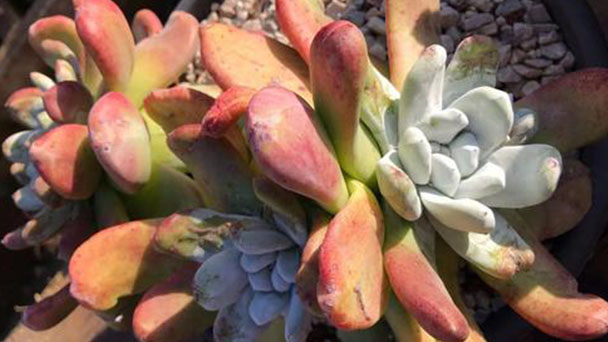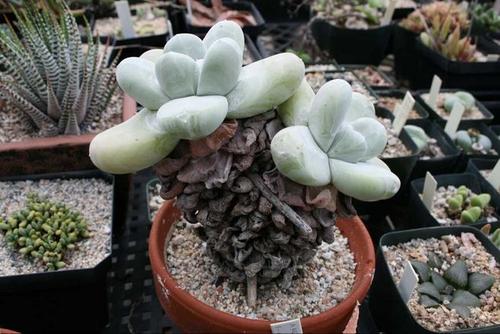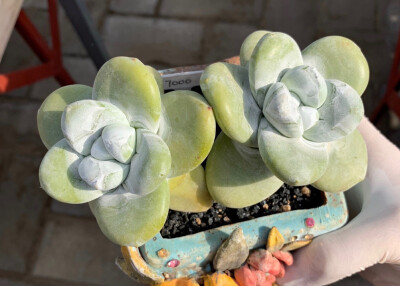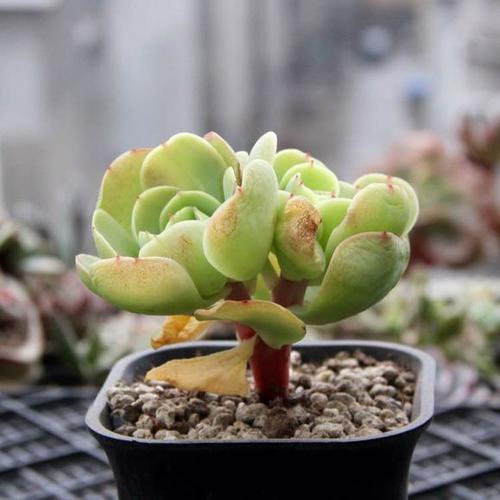Dudleya pachyphytum growing guide
Written by Maggie
Mar 09 2021

Dudleya Pachyphytum is relatively easy to keep indoor. It is extremely adaptive to the environment. In the process of propagating, it needs to give it enough sunshine, if you need to do a good job in the summer sun protection measures, also to keep the soil wet, timely watering Dudleya Pachyphytum. When we grow and care for Dudleya pachyphytum, it needs an appropriate amount of fertilizer, and can also be an appropriate pruning treatment.

Dudleya pachyphytum info
Dudleya pachyphytum is a genus in the Sedum family, consisting of three subgenera with a total of about 100 species and subspecies. William Russell Dudley: The genus was named by William Russell Dudley (who was arguably a natural botanist), a former botanist in the Department of Botany at Stanford University. Many of the Fairy Cup species formerly belonged to the genus Echeveria. All of them are native to the southwestern coasts of North America and their islands, coastal mountains and deserts. Almost all species have fleshy, lotus-shaped leaves, and because of these interesting features, fairy cups are ideal for potting or decorating gardens in the right climate. The genus Dudleya is fleshy and succulent with hairless leaves that grow at the base of the rosette and are usually green to gray in color because their leaves are "green in white ", giving them a distinctive flavor. Pedicels sometimes up to 1 m tall when erect, petals and sepals smaller, petals overlapping five at base, five pistils clustered inside, each with 10 stamens surrounding each. Andromeda is usually found in rock walls, cliff faces, or along interstate highways.How to grow Dudleya pachyphytum
1. Light for growing Dudleya Pachyphytum
Dudleya Pachyphytum prefers to grow in the sun and can be placed in the warm sunshine at ordinary times. When we grow dudleya pachyphytum in summer, it is necessary to avoid the midday sun, which can easily burn the seedlings. In summer, it can be placed in the semi-shade.
2. Water and fertilizer for growing Dudleya Pachyphytum
In general, when propagating Dudleya Pachyphytum, it is important to water it in a timely manner to keep the soil moist, but to avoid soil moisture, if it is cloudy and rainy can stop watering, drainage measures should also be done, and apply fertilizer to Dudleya pachyphytum in an appropriate amount.

3. Pruning for growing Dudleya Pachyphytum
When we grow Dudleya pachyphytum, if the Dudleya Pachyphytum suffers from lack of light or excessive fertilization, it should be pruned properly and the germination buds should be removed and 2 or 3 buds should be kept so that the seedlings can absorb nutrients better.
4. Dudleya indoor care
The Dudleya genus is divided into many species, like Dudleya Pachyphytum, Dudleya farinose, Dudleya brittonii, Dudleya edulis, etc.. Mostly, the species of Dudleya prefers indoor environments. Dudleya likes the warm and dry and sunny environment, not cold, resistant to half shade and drought, afraid of moisture and strong light exposure. Pay attention to proper shading and ventilation in summer. In the growing season, Dudleya can be given full sunshine. In winter, Dudleya can be placed in the indoor light enough place for maintenance, watering at ordinary times to keep the basin soil moist and avoid rain and water.
Dudleya pachyphytum propagation methods
Dudleya pachyphytum propagates by sowing and decapitation, and can also take side bud cuttings.Latest Updated
- Benefits of Bugleweed - 7 Science-backed Health Benefits
- Bugleweed Dangers & Side Effects - Is It Poisonous?
- How to Plant Evergreen Trees - What You Should Know
- When to Plant Evergreens - Grow Guide for Evergreen Trees
- 12 Wonderful Evergreen Shrubs for Your Garden
- 12 Popular Evergreen Plants with Pictures for Beginners
- When And How To Prune A Lilac Bush Like a Pro
- How to Grow & Care for Lilac Vine (Hardenbergia Violacea)
- Japanese Lilac Tree (Syringa Reticulata) Care & Propagation Guide
- Shumard Oak Pros and Cons - What to Know
Popular Articles
- Winter maintenance of Antirrhinum Majus
- How to Grow Terminalia Mantaly Tree
- How to Grow and Care for Crossostephium Chinense
- How to grow Antirrhinum Majus in spring
- Peristeria Elata (Dove Orchid) Profile: Info & Care Guide
- Underwatered Snake Plant (Sansevieria Trifasciata) - Signs And How To Fix
- How to Care for Brazilian Jasmine Plant (Mandevilla Sanderi)
- How to Grow & Care for Graptopetalum Purple Delight in Summer
- Rosa Chinensis (China Rose): Plant Growing & Care Tips
- How to Care for Baby Sun Rose (Aptenia Cordifolia)